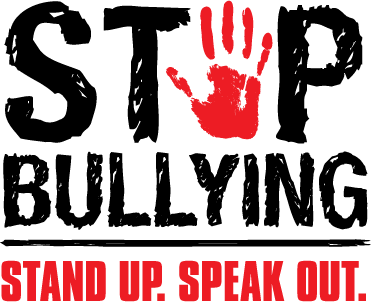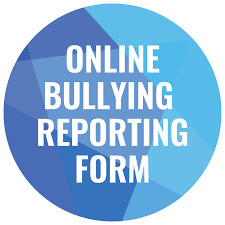Stop Bullying / Report
 Bullying is physical or psychological intimidation that occurs repeatedly over time. Researchers and practitioners generally agree that bullying has three defining characteristics:
Bullying is physical or psychological intimidation that occurs repeatedly over time. Researchers and practitioners generally agree that bullying has three defining characteristics:
- Behavior is intended to harm or disturb;
- Behavior occurs repeatedly over time; and
- There is a real or perceived imbalance of power.
It is also important to consider what bullying IS NOT. Bullying is not a form of conflict, which implies that the two parties are on more or less equal footing.
Examples of Bullying
- Physical Bullying is the most obvious form of intimidation and can consist of kicking, hitting, biting, pinching, hair pulling, and making threats. A bully may threaten to punch you if you do not give up your money, your lunch, etc.
- Verbal Bullying often accompanies physical behavior. This can include name calling, spreading rumors, and persistent teasing.
- Emotional Intimidation is closely related to these two types of bullying. A bully may deliberately exclude you from a group activity such as a party or school outing.
- Racist Bullying can take many forms: making racial slurs, spray painting graffiti, mocking the victim's cultural customs, and making offensive gestures.
- Sexual Bullying is unwanted physical contact or abusive comments.
Cyberbullying is one or a group of kids or teens using electronic means via computers and mobile phones (emails, Web sites, chat rooms, instant messaging and texting) to torment, threaten, harass, humiliate, embarrass or target another kid or teen.
Source: www.stompoutbullying.org
District Policy
The Cole County R-1 School District is committed to maintaining a learning and working environment free of any form of bullying or intimidation. Bullying is strictly prohibited on school grounds, or school time, at a school sponsored activity or in a school related context. Bullying is the intentional action by an individual or group of individuals to inflict intimidation, unwanted aggressive behavior, or harassment that is repetitive or is substantially likely to be repeated and causes a reasonable student to fear for his or her physical safety or property; substantially interferes with the educational performance, opportunities, or benefits of any student without exception; or substantially disrupts the orderly operation of the school. Bullying may consist of physical actions, including gestures, or oral, cyberbullying, electronic, or written communication, and any threat of retaliation for reporting acts of bullying. Cyberbullying means bullying as defined above through the transmission of a communication including, but not limited to, a message, text, sound, or image by means of an electronic device.
Students who are found to have violated this policy will be subject to consequences depending on factors such as: age of student(s), degree of harm, severity of behavior, number of incidences, etc. Possible consequences to a student for a violation of this policy include: loss of privileges, classroom detention, conference with teacher, parents contacted, conference with principal, in-school suspension, out-of-school suspension, expulsion and law enforcement contacted.
- P 2655 Bullying Policy
- P 2656 Student Cell Phone Usage
- R 2610 Misconduct and Disciplinary Consequences
Report a Bullying Incident
The District's Board of Education and Administration promotes a secure and positive school climate, conducive to teaching and learning, that is free from any type of bullying behavior. Anyone who witnesses bullying is asked to report the incident to the school administration immediately. An incident may also be reported online through the Bullying Report Form below. All reports will be thoroughly investigated and appropriate action will be taken. Click the button below to submit an online bullying report form.
Bullying Investigation Process
Steps taken to resolve bullying issues brought to the school’s attention:
- Investigation
- Interview bullying reporter (if not anonymous), victim, witnesses, bully
- Collect and review data
- Contact parents of bully and victim
- Develop a plan to end further bullying behaviors directed at the victim
- Inform teachers and other staff as needed
- Depending on the severity of the event, the District's discipline actions may include: counseling, detentions, community service, suspension and possible expulsion.
Suicide Prevention
 988 Suicide & Crisis Lifeline
988 Suicide & Crisis Lifeline
 Missouri Suicide Prevention Network
Missouri Suicide Prevention Network
 Missouri Department of Mental Health
Missouri Department of Mental Health
The Missouri Department of Mental Health's Division of Behavioral Health manages programs and services for people who need help for a mental illness or alcohol or drug problem. Services available are prevention, education, evaluation, intervention, treatment, and rehabilitation. The Division of Behavioral Health wants all Missourians to receive the mental health services they need to live a happy, healthy, and productive lifestyle of their choice.
Additional Resources
The following resources are provided to help educators, parents and community members recognize bullying behavior and approaches for determining how to respond.
- Stop Bullying U.S. Department of Health and Human Services
- Bullying Missouri Department of Elementary and Secondary Education
- Cyberbullying Resources definitions, prevention and reporting
- Missouri Center for Education Safety is dedicated to enhancing safety and security in public and nonpublic education.
- Courage2Report provides resources for parents, educators and law enforcement. It also provides three ways to report bullying. Call 866-748-7047
- Suicide Prevention - Centers for Disease Control and Prevention







